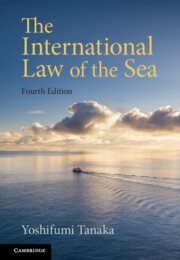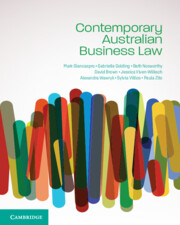Refine search
Actions for selected content:
36807 results in Cambridge Textbooks
9 - Forced Convection
-
- Book:
- Fundamentals of Transport Processes with Applications
- Published online:
- 28 February 2025
- Print publication:
- 16 February 2023, pp 421-470
-
- Chapter
- Export citation
Dedication
-
- Book:
- Calculus
- Published online:
- 31 December 2024
- Print publication:
- 16 February 2023, pp v-vi
-
- Chapter
- Export citation
2 - Integration
-
- Book:
- Calculus
- Published online:
- 31 December 2024
- Print publication:
- 16 February 2023, pp 43-78
-
- Chapter
- Export citation
10 - Natural Convection
-
- Book:
- Fundamentals of Transport Processes with Applications
- Published online:
- 28 February 2025
- Print publication:
- 16 February 2023, pp 471-490
-
- Chapter
- Export citation
6 - Mean Value Theorems and Applications
-
- Book:
- Calculus
- Published online:
- 31 December 2024
- Print publication:
- 16 February 2023, pp 217-264
-
- Chapter
- Export citation
Appendix: Solutions to Odd-Numbered Exercises
-
- Book:
- Calculus
- Published online:
- 31 December 2024
- Print publication:
- 16 February 2023, pp 351-382
-
- Chapter
- Export citation
1 - Introduction and Dimensional Analysis
-
- Book:
- Fundamentals of Transport Processes with Applications
- Published online:
- 28 February 2025
- Print publication:
- 16 February 2023, pp 1-44
-
- Chapter
- Export citation
3 - Diffusion and Dispersion
-
- Book:
- Fundamentals of Transport Processes with Applications
- Published online:
- 28 February 2025
- Print publication:
- 16 February 2023, pp 105-136
-
- Chapter
- Export citation
7 - Sequences and Series
-
- Book:
- Calculus
- Published online:
- 31 December 2024
- Print publication:
- 16 February 2023, pp 265-306
-
- Chapter
- Export citation

The International Law of the Sea
-
- Published online:
- 14 February 2023
- Print publication:
- 02 March 2023
-
- Textbook
- Export citation

Contemporary Australian Business Law
-
- Published online:
- 14 February 2023
- Print publication:
- 14 February 2023
-
- Textbook
- Export citation
5 - Contracts: parties and terms
-
-
- Book:
- Contemporary Australian Business Law
- Published online:
- 14 February 2023
- Print publication:
- 14 February 2023, pp 104-125
-
- Chapter
- Export citation
17 - Intellectual property
-
-
- Book:
- Contemporary Australian Business Law
- Published online:
- 14 February 2023
- Print publication:
- 14 February 2023, pp 448-479
-
- Chapter
- Export citation
Glossary
-
- Book:
- Contemporary Australian Business Law
- Published online:
- 14 February 2023
- Print publication:
- 14 February 2023, pp 480-501
-
- Chapter
- Export citation
15 - Business taxation law
-
-
- Book:
- Contemporary Australian Business Law
- Published online:
- 14 February 2023
- Print publication:
- 14 February 2023, pp 394-426
-
- Chapter
- Export citation
4 - Contracts: validity
-
-
- Book:
- Contemporary Australian Business Law
- Published online:
- 14 February 2023
- Print publication:
- 14 February 2023, pp 71-103
-
- Chapter
- Export citation
9 - Sale of goods
-
-
- Book:
- Contemporary Australian Business Law
- Published online:
- 14 February 2023
- Print publication:
- 14 February 2023, pp 197-226
-
- Chapter
- Export citation
Copyright page
-
- Book:
- Contemporary Australian Business Law
- Published online:
- 14 February 2023
- Print publication:
- 14 February 2023, pp iv-iv
-
- Chapter
- Export citation
16 - Business ethics
-
-
- Book:
- Contemporary Australian Business Law
- Published online:
- 14 February 2023
- Print publication:
- 14 February 2023, pp 427-447
-
- Chapter
- Export citation
Table of statutes
-
- Book:
- Contemporary Australian Business Law
- Published online:
- 14 February 2023
- Print publication:
- 14 February 2023, pp xxxiii-li
-
- Chapter
- Export citation
